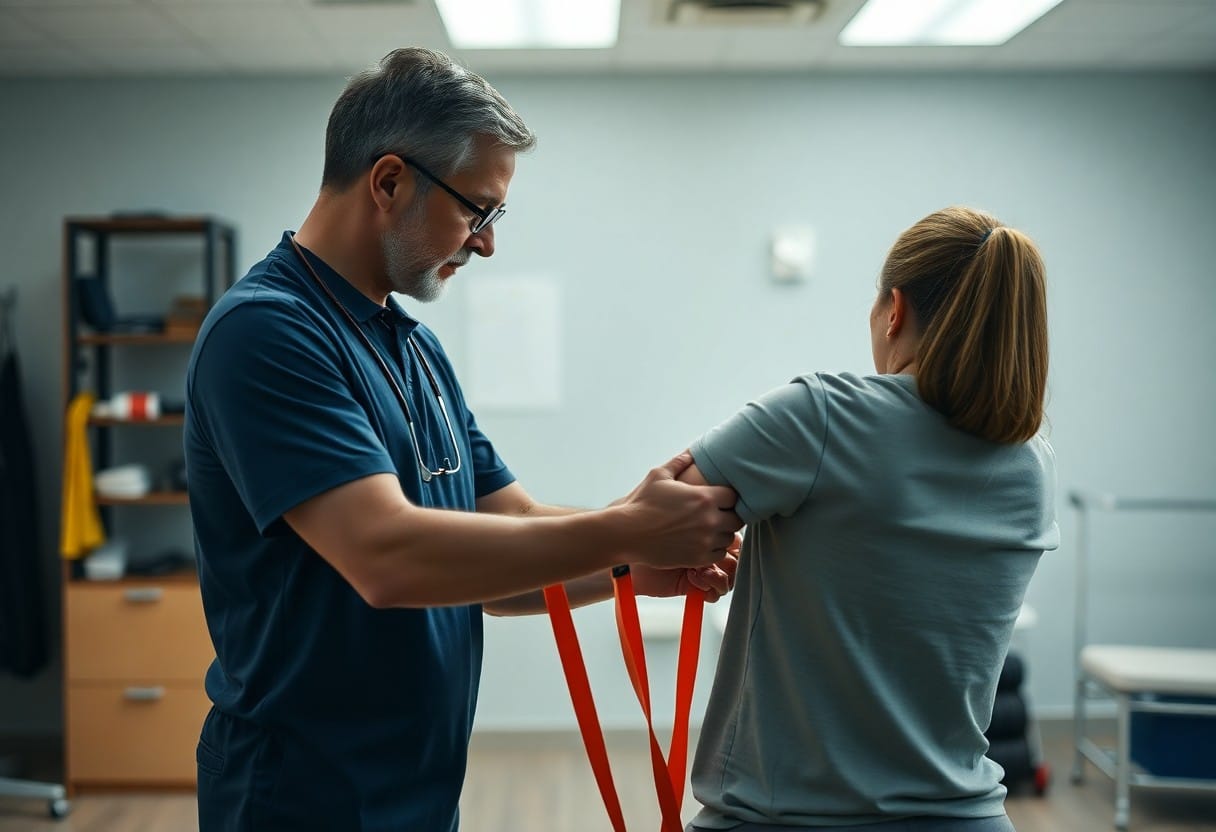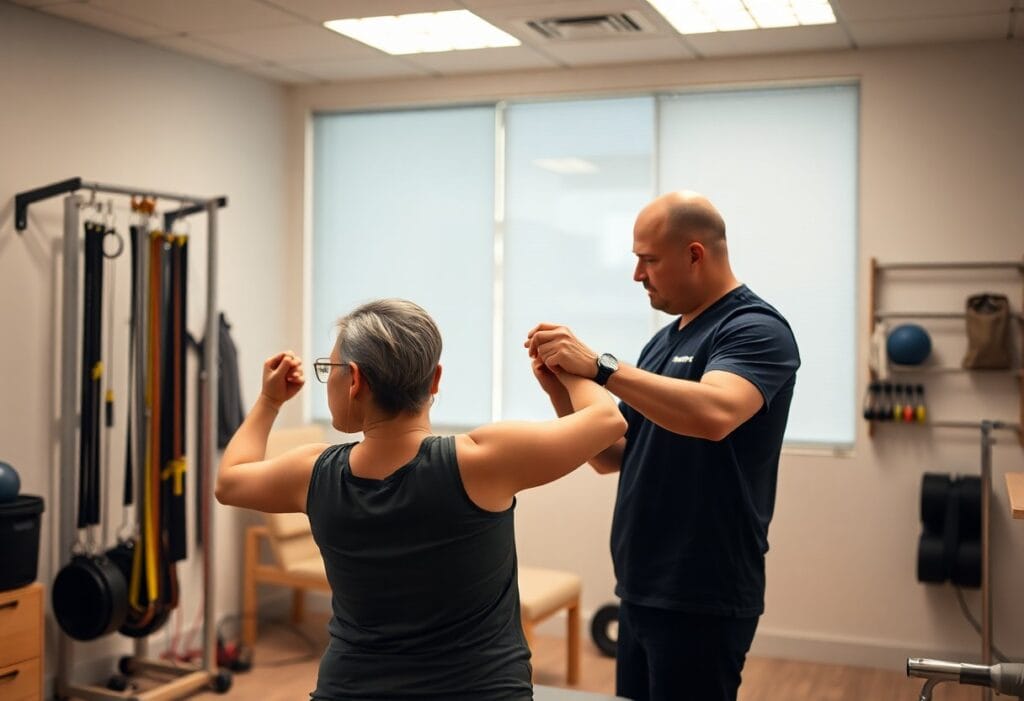Shoulder injuries can significantly impact your daily life, making it imperative to prioritize rehabilitation for full recovery. You can regain strength and mobility by following these four key steps designed to guide you through your shoulder rehabilitation process. Each step focuses on specific exercises and techniques that promote healing, improve functionality, and ultimately restore your shoulder to its optimal condition. Whether recovering from an injury or surgery, understanding these fundamental steps will empower you to take control of your rehabilitation journey.
Understanding Shoulder Injuries
While the shoulder is an incredibly versatile joint, it is also prone to various injuries that can significantly impact your daily activities. Understanding the nature of these injuries is vital for effective recovery and rehabilitation. Injuries can stem from acute trauma, chronic overuse, or degenerative conditions, and knowing the specifics can guide you toward appropriate treatment options.
Common Types of Shoulder Injuries
- Rotator Cuff Tears
- Shoulder Impingement Syndrome
- Shoulder Dislocation
- Frozen Shoulder (Adhesive Capsulitis)
Perceiving the signs and symptoms of these conditions early can make a significant difference in your recovery journey.
| Type of Injury | Description |
| Rotator Cuff Tears | Tear in the muscles/tendons around the shoulder joint |
| Shoulder Impingement | Compression of tendons in the shoulder joint |
| Shoulder Dislocation | Joint becomes separated from its socket |
| Frozen Shoulder | Stiffness and pain restricting shoulder movement |
Symptoms and Diagnosis
Besides knowing the types of shoulder injuries, it’s important to identify the symptoms that may indicate an underlying issue. Many people experience pain, stiffness, or limited range of motion in the shoulder, which can vary in intensity depending on the injury.
Even subtle symptoms should be taken seriously as they may lead to more significant issues if ignored. Common signs include persistent pain, swelling, weakness, or difficulty lifting your arm. If you find yourself experiencing any of these symptoms, seeking professional evaluation is vital for an accurate diagnosis and effective treatment plan tailored to your specific situation.
Step 1: Initial Assessment and Rest
Even if you feel tempted to push through discomfort, the first step in shoulder rehabilitation involves taking an honest look at your injury. Performing a thorough assessment allows you to understand the nature of your shoulder issue, which is imperative for determining an effective recovery plan. Along with evaluation, allowing ample time for rest is vital for preventing further injury and promoting healing.
Importance of Professional Evaluation
About addressing a shoulder injury, seeking a professional evaluation is fundamental to identify the extent of the damage. A healthcare provider can assess your symptoms, recommend appropriate imaging tests if necessary, and establish a tailored rehabilitation program that suits your specific needs.
Strategies for Initial Rest
After your evaluation, implementing effective strategies for rest is key to facilitating recovery. Prioritize avoiding activities that strain your shoulder, as this will help minimize inflammation and pain. Use ice therapy, maintain a comfortable position, and consider using a sling for support during the initial recovery phase.
Rest is an imperative component of your shoulder rehabilitation journey. It’s important to take a break from activities that exacerbate your pain, allowing your body to heal. Incorporate periods of ice therapy to reduce inflammation, and aim to keep your shoulder immobilized if recommended. This careful approach will set a strong foundation for the upcoming stages of rehabilitation.
Step 2: Pain Management
Some effective strategies are important in managing pain during shoulder rehabilitation. You must focus on pain relief techniques that can help control your discomfort and allow you to progress in your recovery journey. Pain management not only enhances your overall rehabilitation experience but also fosters a more positive mindset while you work on regaining full functionality.
Effective Pain Relief Techniques
Across various methods, you can utilize oral medications, topical analgesics, and relaxation techniques to alleviate your shoulder pain. Over-the-counter nonsteroidal anti-inflammatory drugs (NSAIDs) can be beneficial, along with gentle stretching and mindful breathing exercises to help reduce tension and enhance your overall comfort as you rehabilitate.
Role of Ice and Heat Therapy
With the application of ice and heat, you can effectively manage pain and improve mobility in your shoulder. Ice therapy can reduce inflammation and numb pain, while heat therapy can relax tight muscles and increase blood flow to the affected area.
In fact, incorporating ice and heat therapy into your rehabilitation routine can significantly aid your recovery. Apply ice for 15-20 minutes several times a day, especially after any physical activity, to help with swelling and pain. Conversely, use heat after the initial inflammatory phase to loosen muscles and improve circulation. Being mindful of when and how you apply these therapies can make a substantial difference in your pain management and overall recovery process.

Step 3: Rehabilitation Exercises
All rehabilitation programs should include targeted exercises designed to restore strength, flexibility, and range of motion in your shoulder. This step is crucial for not only recovery but also for preventing future injuries. By following a structured exercise plan, you can gradually increase your shoulder’s functionality and confidence in its use. Engaging with a healthcare provider can help tailor your rehabilitation exercises to suit your specific needs and ensure you maintain safe techniques throughout the process.
Strengthening Exercises
Above all, strengthening exercises are vital for rebuilding the muscles surrounding your shoulder. Focusing on these muscle groups can help you regain stability and support for joint function. Incorporate resistance bands, weights, or bodyweight movements, and gradually increase the intensity as your strength improves. It’s crucial to maintain proper form to avoid further injury and to follow your healthcare provider’s guidance on frequency and progression.
Flexibility and Range of Motion Exercises
Between strengthening sessions, dedicating time to flexibility and range of motion exercises is important for your shoulder rehabilitation. These movements enhance blood flow, alleviate stiffness, and prepare your shoulder for more demanding activities. Incorporate gentle stretches and mobility drills that promote flexibility in the shoulder joint while focusing on breathing techniques to relax your muscles.
Exercises such as pendulum swings, wall crawls, and towel stretches can effectively enhance flexibility and range of motion. When performing these activities, aim to stretch your shoulder gently without forcing any movements. Holding each stretch for 15-30 seconds helps improve your joint elasticity over time. Always listen to your body and adjust the intensity as needed, ensuring a balanced approach to your recovery journey.
Step 4: Gradual Return to Activities
For a successful recovery, a gradual return to your usual activities is imperative to rebuild strength and confidence in your shoulder. Begin with low-impact movements and gradually progress to more demanding tasks as your shoulder stabilizes. Tailoring your approach to the specific demands of your sport or daily activities will help you regain full functionality without risking further injury.
Planning a Safe Reintroduction
Between your rehabilitation exercises and full activity restoration, it’s important to plan your return thoughtfully. Build a structured timeline that incorporates gradual increases in intensity and complexity. Start by engaging in activities that require minimal shoulder involvement before moving on to those that challenge your newly developed strength and mobility.
Monitoring Progress and Adjustments
Among the key aspects of your rehabilitation journey is the continuous assessment of your progress and the willingness to make adjustments as needed. Consistent evaluation of your shoulder’s response to physical activities can help identify when to push forward or pull back.
A proactive approach in monitoring your shoulder’s performance includes tracking any discomfort, weakness, or lingering pain during activities. You should keep a journal detailing exercise routines and sensations experienced, enabling you to communicate effectively with your healthcare provider. Regularly adapting your rehabilitation strategies based on your observations will foster a smoother return to full functionality, ensuring a safer and more robust recovery process.
Summing up
With these considerations, you can begin on a successful shoulder rehabilitation journey by focusing on four key steps: assessment, strengthening, flexibility, and functional training. Each phase is designed to progressively restore your shoulder’s functionality and alleviate pain. By ensuring you follow these structured steps consistently, you will empower yourself to regain full movement and strength, ultimately enhancing your overall well-being and quality of life. Be patient and listen to your body as you work towards your recovery goals.

